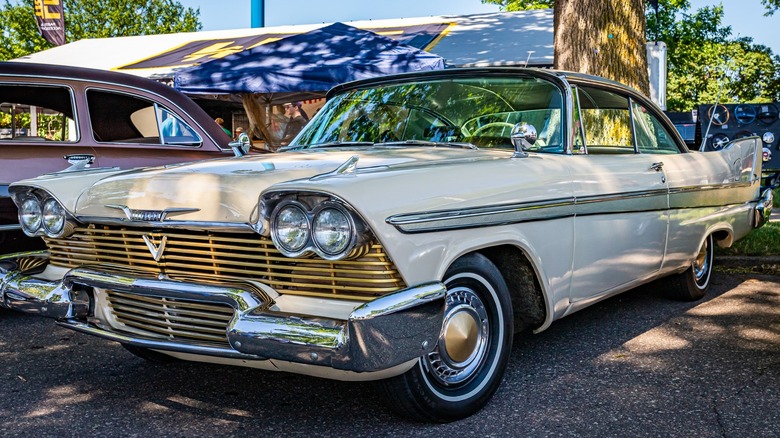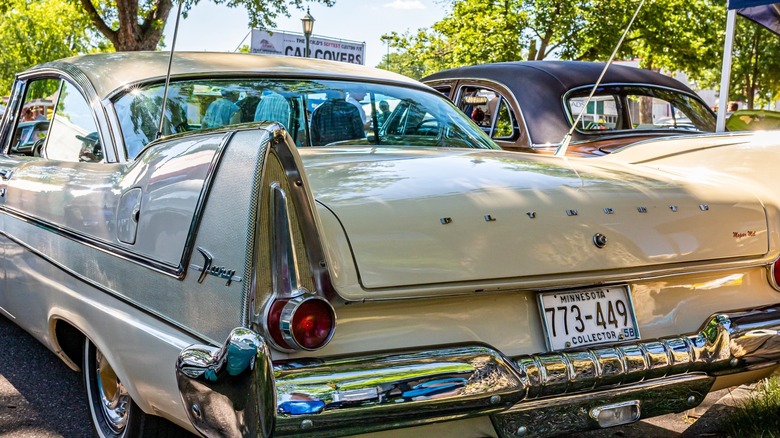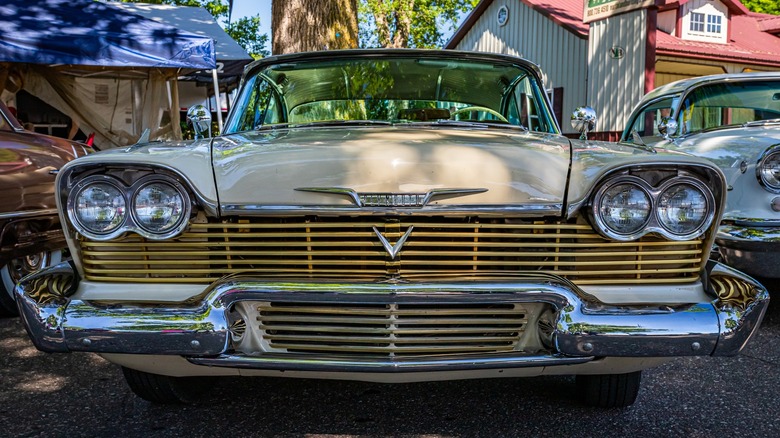What Made Plymouth's Golden Commando Engine Stand Out From Competition
Even if you're a devout car enthusiast, you'd be forgiven for being unfamiliar with the Plymouth Golden Commando. It certainly isn't the first thing that comes to mind when you think of Plymouth icons like the Roadrunner, Superbird, Barracuda, or Duster. However, pre-dating all of those legendary bits of muscle car history is the Plymouth Fury. One particular model, the Plymouth Fury Golden Commando, took things to the next level.
In 1958, Plymouth built only 5,300 examples of the Golden Commando variant of Fury. Special features of the Golden Commando included things that we take for granted today but were high-end features over 60 years ago. Power steering, power brakes, and tinted glass, for example. In addition, the Golden Commando had a push-button automatic transmission. However, one of the most outstanding features of this piece of Plymouth history is the V8 engine under the hood. Let's check out the specs.
A potent powerplant, especially for the time
Before we dig into the specs, it's worth remembering that the Golden Commando and its V8 engine are almost 70 years old. While the figures may not look all that impressive by today's standards, they were monumental back in 1958.
The Golden Commando V8 has 350 cubic inches (5.7 liters) of displacement with two Carter four-barrel carburetors sitting atop its intake manifold. With overhead-valve and cam-in-block pushrod construction, it's clear how this engine is related to the iconic muscle cars that would come within the decade following its release.
With 305 horsepower and 370 lb-ft of torque, it was one of the most powerful cars of 1958. That's more horsepower than the 1958 Chevrolet Corvette, 1958 Aston Martin DB4, and even the 1958 Ferrari 250GT.
Appropriate to its name, the Golden Commando engine sported gold-painted valve covers and a gold air cleaner assembly. While it packed plenty of punch, the Fury wasn't exactly a sports-oriented chassis.
Powerful, but pulling a plethora of weight
305 horsepower and 370 lb-ft of torque is an impressive power output for the time. However, unlike the models it bests in power we mentioned above, the Fury is quite a heavy car. So, it wasn't exactly a visceral experience to drive one.
At 206 inches long and nearly 80 inches wide, the 1958 Plymouth Fury shares nearly identical dimensions to a single cab short bed 2024 Ford F-150. It's not just huge, either. The curb weight of the Fury, depending on the equipment, could reach nearly 4,000 pounds. Again, getting pretty close to matching the weight of the modern F-150 on the low end. So, as one might imagine, it's not much of a rocket ship experience while behind the wheel.
Still, the Golden Commando stands out as an extremely potent and groundbreaking engine for its time. Without it, the groundwork for the monumental modern Hemi V8 may never have been laid. So, if you ever see a Plymouth Fury Golden Commando in person, be sure to quietly thank its V8 engine for the existence of the Dodge Challenger SRT Demon.


